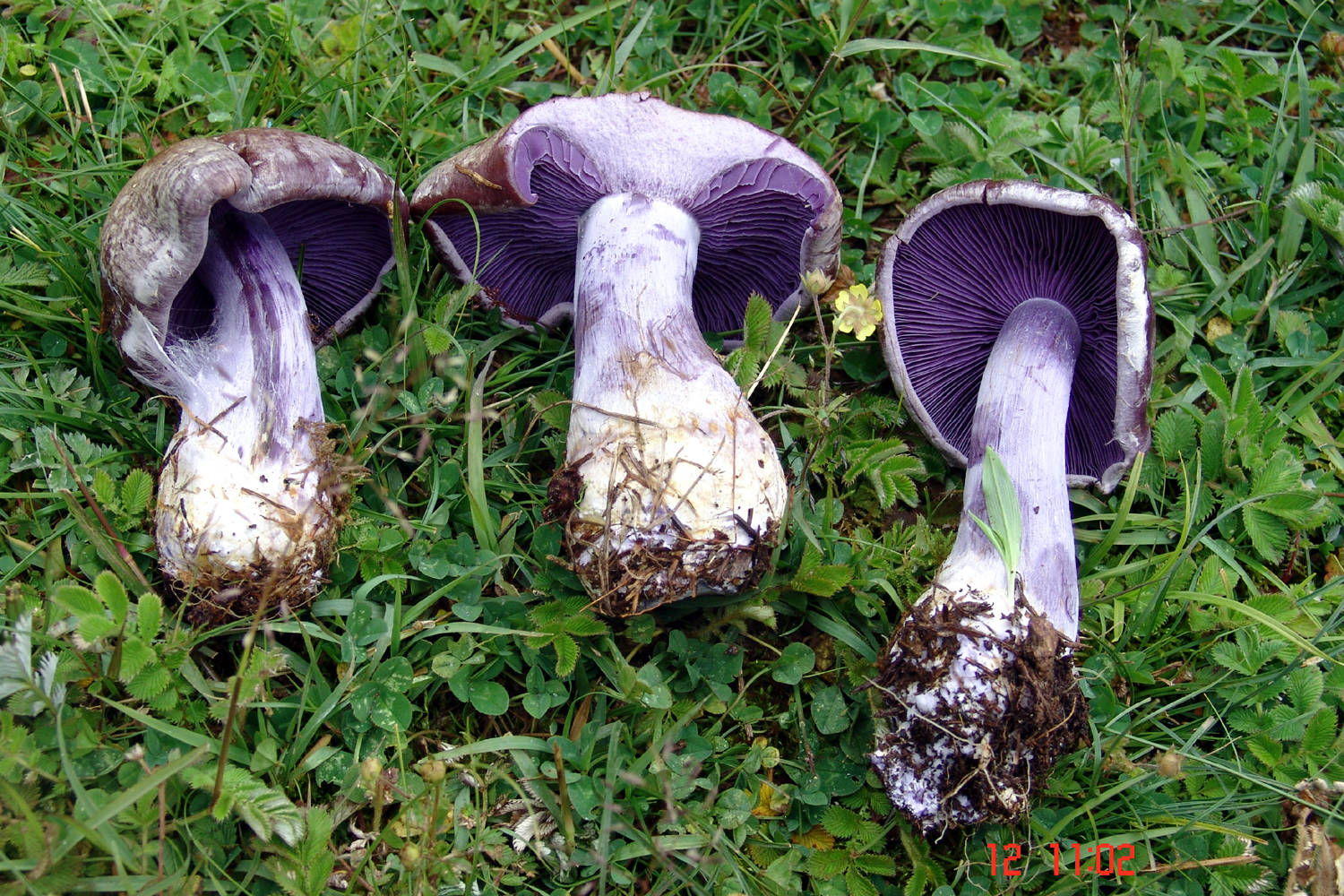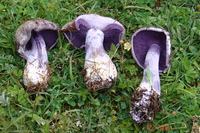
Local name: No local name known
Edibility: Inedible
Habitat: Terrestrial and scatted to gregarious.
Description: Cap: 5-15cm with an incurved margin, convex when young, umbonate or flat as it matures. Dark violet/purple to blue-black, and is covered with fine, downy scales. Hymenophore: Dark violet gills, changing to a purplish-brown with age, adnate, becoming adnexed, and are fairly well-spaced. Stem: 5-10 cm tall, 1- 2 cm thick, the base of the stem can sometimes be as wide as 4 cm thick, con-colourous to thecap and covered in woolly whitish fibrils. Flesh: Violet. Spore Print: Rusty brown.
Comments: Of the many violet-coloured Cortinarius species, C. violaceus is the most deeply coloured. It is sometimes so dark that it is almost black, making it difficult to notice in woodland. The only other mushrooms with a comparable colour are certain Leptonia species, including L. carnea and L. nigroviolacea. The Leptonia species are easily differentiated due to their pink spore print



